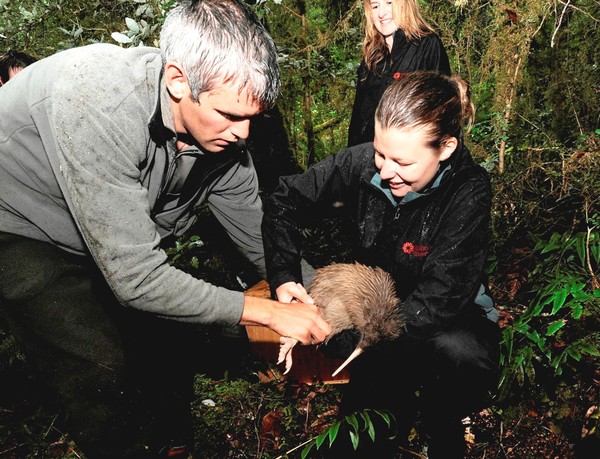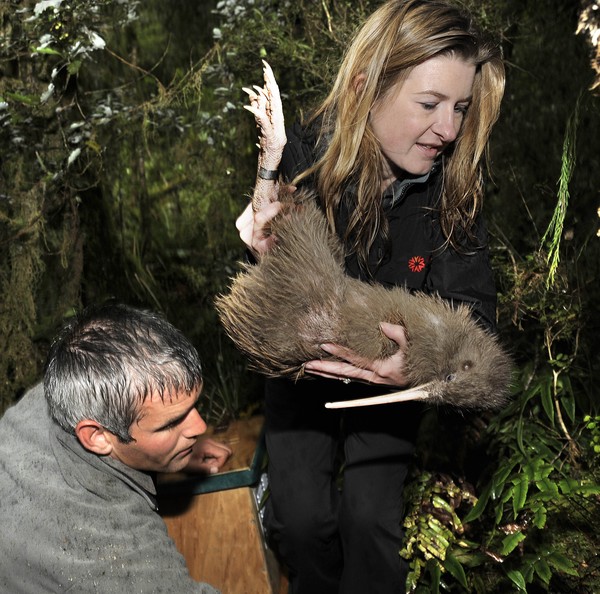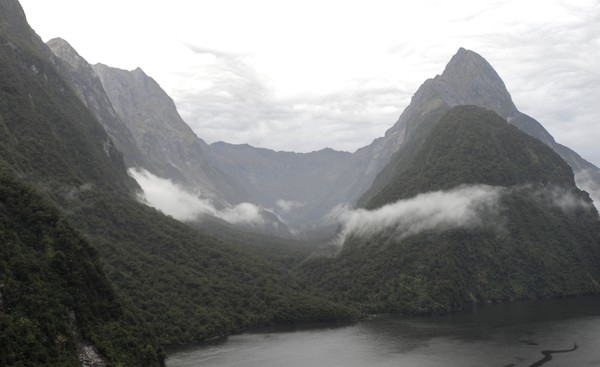Kiwis set up home in Sinbad Sanctuary
Friday 4 February 2011, 1:45PM
By Southern Discoveries
1,031 views

New Zealand native wildlife is about to get wilder with the introduction of a breeding pair of Kiwis to Sinbad Gully in Fiordland as part of the Sinbad Sanctuary Project which is an initiative funded by Southern Discoveries in partnership with the Fiordland Conservation Trust and Department of Conservation (DOC).
The nocturnal pair was relocated to the conservation area yesterday (Thursday February 3) by DOC and Southern Discoveries staff celebrating a milestone that sees the gully already a safe haven for kiwi .
The Sinbad Sanctuary Project looks to protect the habitat of rare species in the Sinbad Gully at the foot of Mitre Peak – otherwise known as New Zealand’s most photographed mountain. The project is working to provide a predator-free environment – free from pests such as stoats, rats and possums in the Sinbad Gully.
Southern Discoveries’ General Manager John Robson said the company was “delighted” to welcome the birds to its conservation project.
“The aim of the Sinbad Sanctuary Project is to see the remote valley of Sinbad Gully become a sanctuary for many endangered and native species with hopefully an increase in numbers in years to come,” he said.
“It’s very rewarding for us that we have reduced the pest population to such a degree within the first two years of the sanctuary project that DOC is willing to increase the Kiwi population in the valley.”
DOC Te Anau Area Manager Reg Kemper said the plan was to release the birds in the middle of the valley where they are reasonably certain there are no kiwis in close proximity. (This is important as Kiwi are territorial and can be aggressive towards trespassers).
“We’re focused on taking practical steps to ensure the survival and safety of Kiwi,” he said. “Great efforts have been made to ensure the birds will fit in perfectly at Sinbad Gully. We spent over a week camped at the proposed Kiwi release site playing recorded Kiwi calls to make sure there was no response from other Kiwi in the area.
“The Sinbad Sanctuary Project has proven itself to be extremely successful through its predator control and consequently now affords kiwi a high level of protection. We’re confident they will be safe here.”
Southern Discoveries is the oldest and most well-established operator in Milford Sound, taking visitors on cruises of the National Park on its fleet of modern, comfortable boats to encounter unique wildlife, tumbling waterfalls and the towering beauty and majesty of Mitre Peak. They also operate the Milford Discovery Centre & Milford Deep Underwater Observatory.
Last year the company was nominated for a prestigious Department of Conservation (DOC) award for helping to protect Kiwi heritage.
ENDS
Sinbad Gully background information
The Sinbad Gully is located close to the head of Milford Sound within Fiordland National Park and the Te Wāhipounamu - South West New Zealand world heritage area.
In 1974 Sinbad Gully was set apart as a “Special Area” because of the presence of kakapo and the largely unmodified state of the vegetation. This status was lifted in 1992. At this stage deer had become established in Sinbad Gully and kakapo were thought to be no longer present, therefore it was considered no longer necessary to restrict public access under the special area status. Sinbad Gully is now classified as part of the “Eastern Remote Zone” under the Fiordland National Park Management Plan (2007).
The Sinbad Gully has a natural barrier of steep terrain, combined with a cold, wet climate which has limited the invasion of mammalian predators. These attributes have contributed to making it a safer refuge for the rare lizard species such as the Sinbad and Mahogany skinks and the Cascade gecko. All three were only recently discovered in the Sinbad Gully and the Sinbad skink is known only to the Sinbad Gully. Other species present include rock wren, kea, whio, kiwi, weka, large weta and other large colourful invertebrates. The valley was also one of the last refuges of kakapo in Fiordland.
The animal pests that DOC proposes to control have a serious impact on native wildlife through direct predation and competition for food. Control of both possums and stoats will be the key focus for the project. In time if funding allows rodent and deer control may also become a focus in the Sinbad.
Once the initial knockdown of possums and stoats has been achieved, ongoing control work will be required to maintain low predator densities. Maintenance control will be achieved through regular servicing of stoat traps and by monitoring possum densities and controlling as required. The valley walls surrounding the Sinbad Gully form a natural barrier that will limit the re-invasion of introduced predators.

